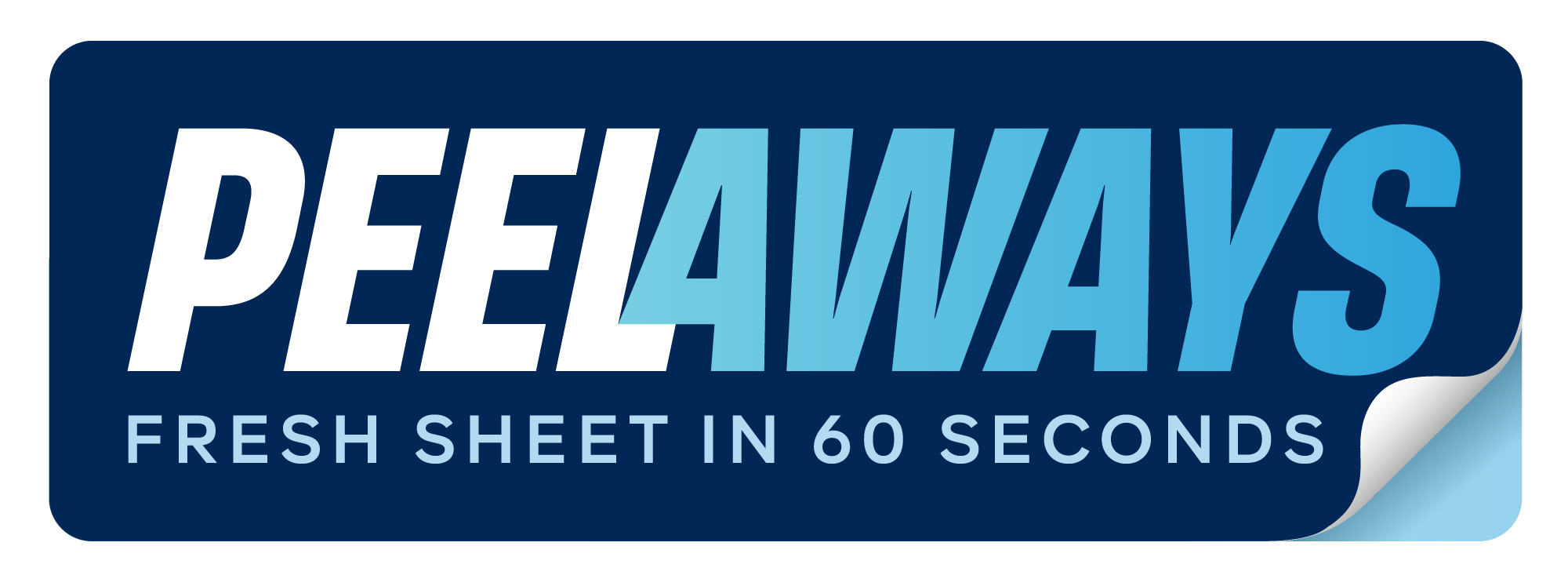How Air Filtration Reduces Pathogens in Shared Spaces

Air filtration systems lower the spread of airborne pathogens like viruses, bacteria, and fungi in shared spaces. These systems work by filtering contaminated air, removing harmful particles, and releasing cleaner air, which reduces the risk of respiratory illnesses. Here's what you need to know:
- Airborne Risks: Poor indoor air quality increases the chances of infections, especially in crowded or poorly ventilated areas.
- How Filtration Works: Systems use filters (like HEPA), UV-C light, or other technologies to trap or neutralize harmful particles.
- Proven Benefits: Studies in schools and hospitals show fewer infections when advanced filtration is used, particularly during high-risk seasons.
- Options: Portable units suit smaller spaces, while built-in HVAC systems cover larger areas. Combining both offers flexibility.
- Challenges: Costs, maintenance, and building limitations can make implementation tricky, but long-term health and productivity gains often outweigh these hurdles.
Air filtration alone isn't enough. Pairing it with better ventilation, humidity control, and UV-C systems can create safer environments for everyone.
Benefits of HEPA air purifiers in healthcare settings
How Air Filtration Systems Work
Air filtration systems operate by pulling in contaminated air, passing it through specialized filters designed to trap harmful particles, and then releasing clean air back into the space. This process often combines mechanical filtration with additional treatments to neutralize pathogens, reducing their ability to spread.
Most systems use multiple filtration stages in sequence. This ongoing cycle steadily lowers the concentration of airborne pathogens and other contaminants in shared environments.
Types of Filtration Technology
Different filtration technologies serve various purposes, each with its strengths and limitations.
HEPA (High-Efficiency Particulate Air) filters are widely regarded as the industry standard for removing pathogens. These filters capture particles using methods like impaction, interception, and diffusion. They are particularly effective against particles as small as 0.3 micrometers, which include many airborne pathogens.
UV-C disinfection systems take a different approach by using ultraviolet light to deactivate pathogens. Installed in air ducts or portable units, UV-C lamps are especially effective against bacteria and viruses that might slip through traditional filters, making them a valuable addition to shared spaces.
Activated carbon filters are excellent for removing odors and chemical pollutants but are less effective at capturing pathogens. Many systems pair carbon filters with other technologies to address both biological and chemical air quality concerns. The carbon’s porous structure traps gases and volatile organic compounds, improving indoor air conditions.
Electrostatic precipitators rely on electrical charges to attract and capture particles. These devices charge incoming particles and collect them on oppositely charged plates. While effective, they require frequent cleaning and may generate small amounts of ozone as a byproduct.
HEPA Filter Standards and Performance
HEPA filters set the bar when it comes to filtering out pathogens. True HEPA filters are capable of capturing at least 99.97% of particles that are 0.3 micrometers or larger, effectively removing most pathogens attached to larger droplets.
The 0.3-micrometer threshold is critical because it represents a challenging size range for filtration. For context, bacteria typically measure between 0.5 and 3.0 micrometers, while viruses are smaller, often between 0.02 and 0.3 micrometers. However, viruses rarely exist as isolated particles; they usually hitch a ride on larger droplets or particles that HEPA filters can capture.
Medical-grade HEPA filters, often used in hospitals, exceed standard efficiency levels, achieving filtration rates of 99.99% or higher. These filters undergo strict testing to ensure they maintain their performance over their lifespan, which typically ranges from 6 to 12 months.
For non-HEPA filters, the MERV (Minimum Efficiency Reporting Value) scale measures performance, with ratings from 1 to 16. HEPA filters surpass this scale entirely. Standard HVAC filters fall between MERV 6 and MERV 13, while MERV 13 to 16 filters approach HEPA-level efficiency for larger particles.
Portable vs. Built-In Systems
The design of an air filtration system significantly impacts how and where it can be used.
Portable air purifiers are ideal for smaller spaces, typically covering areas of 300–500 square feet. These units are easy to set up, require minimal maintenance, and can be moved to high-risk zones as needed. Many models include features like real-time air quality monitoring and automatic adjustments based on detected particle levels.
Built-in HVAC filtration systems, on the other hand, provide comprehensive coverage for entire buildings. They integrate into existing heating and cooling systems, filtering all circulating air. These systems are capable of handling large volumes of air and maintaining consistent air quality across multiple rooms.
However, HVAC systems must balance filtration efficiency with airflow resistance. High-efficiency filters can restrict airflow, making HVAC systems work harder and potentially shortening their lifespan. Upgrades like stronger fans and modified ductwork are often necessary to support HEPA-level filtration.
Hybrid approaches combine the strengths of both portable and built-in systems. For example, medical facilities might use built-in systems for overall air quality while deploying portable units in high-risk zones. This strategy ensures thorough coverage while allowing targeted improvements where they’re most needed.
The choice between portable and built-in systems often depends on building characteristics and usage patterns. Older buildings with limited HVAC capabilities may lean on portable units, while new constructions can incorporate advanced filtration systems from the start. Spaces with fluctuating occupancy, like conference rooms or classrooms, benefit from portable units that can adapt to changing needs.
Research Results: How Well Air Filtration Reduces Pathogens
Recent research highlights how air filtration systems can significantly cut down airborne pathogens and reduce infection rates in shared environments. These studies span various settings and consistently demonstrate the measurable health benefits of using high-quality air filtration.
Studies in Hospitals and Schools
Research conducted in healthcare facilities and educational institutions provides clear evidence of the advantages of advanced air filtration. In hospitals, studies in operating rooms and patient care areas show that upgrading to high-performance filters improves air quality and reduces infection risks. Similarly, classrooms equipped with enhanced filtration systems report better air quality and fewer respiratory infections compared to those with standard systems. Even in residential spaces, such as university dormitories, portable air purifiers have been linked to fewer cases of respiratory illness.
Combining Air Filtration with Other Methods
While air filtration alone is effective, combining it with other strategies enhances its impact. Studies reveal that pairing improved filtration with better ventilation results in a more significant reduction in airborne contaminants than using filtration on its own. Adding UV-C disinfection to the mix further decreases pathogen levels and helps lower respiratory outbreaks, particularly in nursing homes. Maintaining proper humidity levels also improves filtration efficiency and limits the survival of pathogens. Together, these methods, when used simultaneously, outperform isolated or sequential approaches in improving air quality.
Measuring Infection Rate Decreases
Real-world data provide compelling evidence of the impact of upgraded air filtration on infection rates. Long-term studies in healthcare settings show that enhanced filtration systems lead to fewer respiratory infections, especially in high-traffic areas like intensive care units. Seasonal data indicate that these benefits are most pronounced during colder months when indoor occupancy increases. Workplace studies also show that better filtration reduces sick leave and enhances productivity. Additionally, cost analyses suggest that advanced filtration systems are financially justified, as they help lower treatment costs and shorten hospital stays.
Interestingly, facilities with poorer baseline air quality tend to see the most dramatic improvements after implementing advanced filtration systems, reinforcing the importance of starting conditions in determining outcomes.
sbb-itb-45288fe
Challenges in Using Air Filtration Systems
Adopting air filtration systems isn’t without its hurdles. Understanding these challenges is key for organizations aiming to improve indoor air quality effectively.
Cost and Maintenance Issues
Air filtration systems, particularly those using HEPA filters or portable units, come with ongoing costs. These filters need regular replacement, and their dense structure requires more energy to operate, which can drive up utility bills. On top of that, proper maintenance is essential. Mishandling or neglecting upkeep can reduce performance and even void warranties, adding another layer of expense. These financial concerns are often compounded by structural limitations and regulatory requirements.
Building Requirements and Regulations
Cost isn’t the only issue. Many buildings, especially older ones, face structural and regulatory challenges when upgrading air filtration systems. For instance, older HVAC systems may not provide enough airflow to support high-efficiency filters, leading to expensive ductwork or ventilation upgrades. Facility managers also have to navigate a maze of regulations, which vary depending on the type of building. Schools, healthcare facilities, and other spaces each have their own safety and compliance standards. Fire codes may further restrict the use of certain filtration materials unless they meet specific safety criteria. Adding to the complexity, securing permits, passing inspections, and finding adequate space for portable units can all make implementation more difficult.
New Technologies in Air Quality Control
New technologies promise to address some of these issues but bring their own set of challenges. For example, far-UV disinfection systems, which can inactivate pathogens without harming humans, are expensive and require specialized installation. Similarly, artificial intelligence–driven systems that adjust filtration rates based on real-time air quality data can improve efficiency, but their reliance on strong connectivity and technical expertise adds complexity. Other methods, like photocatalytic oxidation and bipolar ionization, aim to neutralize airborne contaminants but raise questions about long-term effectiveness and maintenance needs. Facilities that integrate traditional filtration with these advanced technologies may see better pathogen reduction, but managing multiple systems can strain resources and complicate operations. As these technologies evolve, they hold the potential to create cleaner, safer environments, but careful planning and resource allocation are essential to overcome the challenges they introduce.
Conclusion: Creating Cleaner Shared Spaces
Air filtration systems play a key role in cutting down airborne pathogens in shared environments. Research highlights the importance of a well-rounded air quality strategy to ensure safer spaces.
Main Points
HEPA filters and portable air cleaners are highly effective at trapping harmful pathogens, especially when paired with better ventilation and other safety measures. Studies conducted in real-world settings like hospitals and schools back up these results, showing how these tools can significantly lower infection risks.
A layered approach - combining air filtration, improved ventilation, administrative policies, and even rethinking space layouts - proves to be the most effective. Research indicates that relying on a single solution often falls short, making it essential to adopt a mix of strategies tailored to the specific needs of each environment [1][2].
New developments, such as AI-powered filters and advanced materials, offer exciting possibilities for even better performance, though these advancements may come with higher upfront costs.
Moving Forward with Air Filtration
The path ahead calls for integrating cutting-edge, energy-efficient technologies into air quality strategies. The future lies in solutions that seamlessly work with existing building systems. As facilities grapple with increasingly complex threats - ranging from traditional pathogens to wildfire smoke and microplastics - investing in sophisticated filtration systems becomes more important than ever.
For organizations aiming to improve shared spaces, the focus should be on balancing performance with energy efficiency. While initial investments may seem high, the long-term benefits include fewer illnesses, greater productivity, and safer environments.
The next step involves combining air purification systems with HVAC setups and smart building technologies. By addressing implementation challenges and adopting both established and emerging innovations, facilities can create spaces that are not only cleaner but also safer for everyone who uses them.
FAQs
How effective are HEPA filters compared to other air filtration methods in removing pathogens?
HEPA filters are known for their impressive ability to capture 99.97% of airborne particles as tiny as 0.3 microns. This makes them highly effective at removing harmful particles like bacteria, viruses, and allergens from the air, offering a reliable way to improve air quality.
When compared to standard HVAC filters, HEPA filters stand out for their ability to trap much smaller particles. They also tend to outperform filters with antimicrobial coatings, which can vary in how well they work. Studies have shown that HEPA filters are particularly effective at reducing airborne pathogens, including viruses such as SARS-CoV-2. This makes them a solid choice for shared indoor spaces where clean air is a priority.
In settings where preventing cross-contamination is crucial, pairing HEPA filtration with other hygiene measures - like Peelaways disposable bed sheets - can help create a safer and more sanitary environment.
What should I consider when deciding between a portable or built-in air filtration system?
When choosing between a portable or built-in air filtration system, it’s important to consider the size of your space and what you need from the system. Portable units work well for smaller spaces or when you want the flexibility to move them between rooms. In contrast, built-in systems are designed to handle larger areas, like filtering the air throughout an entire home.
You’ll also want to think about installation and upkeep. Portable units are simple to set up, require little maintenance, and can be placed wherever they’re needed most. Built-in systems, while more complex to install, offer consistent, whole-home coverage without the need to move anything around. The right choice will depend on your space, your lifestyle, and how you prioritize air quality.
How does combining air filtration, UV-C disinfection, and better ventilation improve air quality in shared spaces?
Combining air filtration, UV-C disinfection, and improved ventilation offers an effective way to achieve healthier indoor air. Air filtration systems trap particles such as dust, allergens, and bioaerosols, while UV-C light targets airborne pathogens, disrupting their DNA and rendering them inactive. Meanwhile, enhanced ventilation introduces fresh air, helping to dilute indoor pollutants and reduce contaminant levels.
When used together, these methods not only lower the risk of illness but also enhance comfort and promote safer shared spaces. By tackling multiple aspects of air quality, this approach provides a well-rounded solution for reducing harmful pathogens indoors.
Related Blog Posts
- 5 Steps for Handling Contaminated Linens Safely
- Checklist for Infection Control in Shared Living Spaces
- How Disposable Sheets Reduce Cross-Contamination
- Best Practices for Energy-Efficient Ventilation in Care Facilities
Comments
0

SAVE MONEY & WATER
Professionals & Institutions save a fortune on labor/laundry.

SUPERIOR COMFORT
The first thing our customers notice is how soft our sheets are.

100% WATERPROOF
Each layer is 100% Waterproof, perfect for spills and accidents

SAVE TIME
Change the sheet in under 1 minute without stripping the bed.




Leave a comment